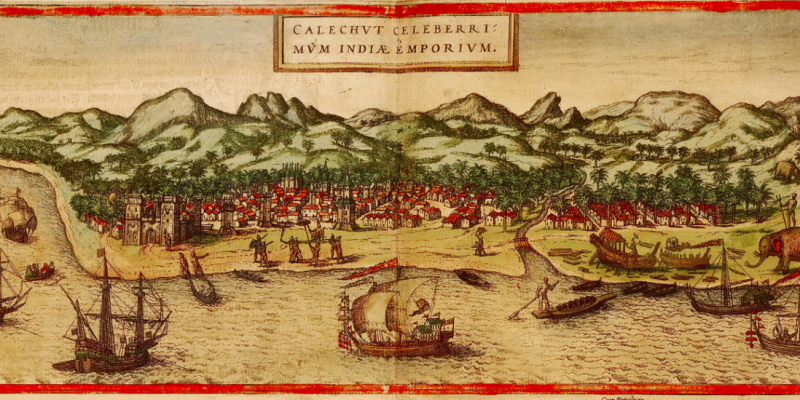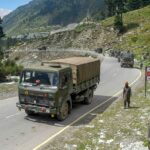A recent article by the historian Shonaleeka Kaul made a claim for an idea of India as a “notion of a ‘felt community’ and common bounded entity that is affirmed and named as Bharatvarsha”, drawing on the Puranas and the Mahabharata, as also accounts by Chinese monks. This invited first a polemical response, a rejoinder by Kaul and then a response to the rejoinder.
However, there is a deep, underlying proposition that remains unthought in all of these iterations. The articles work around the question of whether we, the people of India, have always had an idea of India that corresponds to the current map of the Indian nation-state: from the Himalayas to the Indian Ocean. This question I would argue, works within a conventional framework of historical thinking and contributes to the closing of the Indian mind that we are seeing under the present political dispensation.
Paradoxically, a retreat into a Hindu imagination of identity, space and time, is accompanied by an aspirational universalism that speaks to the world at large. There is at the same time a burrowing into one’s navel – a notion of nation that has existed since the dinosaurs – as a centrifugal spinning of Indian knowledge from surgery to astrophysics that radiates into the world. It was the “Muslim invasions” and colonialism, it seems, that made us forget all of this brilliance. We became amnesiacs, sleepwalking into a rediscovery of what had always already been there.
The present closure of the mind arises from the fact that our imaginations have shrunk to imagining India as always having been bounded by the sea to the south and the mountains to the north, with a gateway to the northwest through which inconvenient foreigners entered, from the Greeks to the Muslims.

A dhow is shown sailing in the Indian Ocean in this 20th century painting. Photo: Mary Evans Picture Library
The ocean is mentioned in passing as a horizon of thought, not as a maker of history. Historians of a Hindu conservative bent have been cautious about dipping their feet in the ocean.
Also read: Exploring the Indian Ocean as a Rich Archive of History – Above and Below the Water Line
There have been specific upper caste injunctions about kaalapani and dire demands for prayascitta from those who defiled the land through an engagement with the fluidity of the ocean. These injunctions have shaped the largely upper caste academic imagination, and made it resolutely terrestrial, giving us an impoverished idea of India as bharatvarsha: land minus the ocean.

‘Catapulta’ by Edward Poynter shows the Romans in action during the siege of Carthage in the Third Punic War.
Kesari Balakrishna Pillai, literary critic and polymath, began writing a history of Kerala in the 1930s after penning a series of essays on Malayalam literature excoriating the influence of Sanskrit classicism as much as English literature. Reacting both against the claustrophobia of tradition as well as the rising tide of nationalism, he began his history of Kerala with an account of Babylon and the wars between Rome and Carthage. After all, the millennium long engagement with the ocean had meant that Carthage paid tribute on each defeat to the empire with pepper from the Malabar coast.
Pillai asked poignantly, is Kerala a chapter in the history of Rome or is Rome a chapter in the history of Kerala? He was signalling towards larger geographies of engagement and belonging arising from a distemper regarding a narrow nationalism that saw mountains and oceans as barriers to human interaction.
Meanwhile, across the board, the upsurge of nationalism was prompting Hindu upper caste nationalists to emphasise the hoary terrestrial unity of India. One tendency led to the bunch of thoughts embodied in the writing of Brahmins like Golwalkar and Savarkar. They testily reacted against Muslim and Dalit upsurges, through imagining a Hindu rashtra lying between the mountains and the ocean, where everyone knew their place in a hierarchical society. Another tendency was present in a discovery of India through personal engagement and peregrination as much as intellectual and affective reconstruction. Nehru’s Autobiography and his history of “India” from the Indus Valley Civilisation to the present rode on a colonial terrestrial historiography and grafted on to the map of British India the nation that would inherit an imperial geography and its borders. Nehru’s trilogy, completed by Glimpses of World History, worked with an idea of Indian civilisational unity to parallel other civilisations like the Greek and Roman.

A 1735 French Map of the Coromandel coast.
Fernand Braudel in his magisterial history of capitalism looked at 17th century India in terms of flows of people, trade and ideas across the ocean and land. He imagined South Asia as a quadrilateral at the centre of many intersecting and connecting geographies. The south west coast was integrated with the oceans through to west Asia, Europe and beyond. The Coromandel coast was integrated with south-east Asia and China as much as the long oceanic route from Malacca to Aden and beyond. North-west India was integrated with Central Asia, and the Safavid and Ottoman empires. Finally, the north-east, through the Bay of Bengal and overland routes, lay within intersecting realms of commerce and politics stretching to China and north Asia.
This was India at a particular historical conjuncture. The story can be carried both further back into Chola engagement with south-east Asia in the 13th century as much as forwards with the connection of India with the Caribbean and Africa through the histories of indentured labour.
The map that Hindu nationalism and Hindu historians summon up would exclude commerce and labour (the province of the Vaisya and Sudra) to exalt philosophical effusions such as bharatavarsha (the province of the Brahmin). Imagining unity is central to the upper caste imagination (ekam sadvipra bahudha vadanti). India is composed of multiple geographies and territorial engagements; a map that exults in the jangama over the sthavara – the moving body over the petrified idea.
So what about the Kshatriyas and the Sudras who were aspirant Kshatriyas that created the landed empires, from the Mauryas through the Guptas, Rashtrakutas, Cholas, Vijayanagara, Nayakas? As also those who came from Central Asia, indigenised, and created landed empires from the Delhi Sultanate to the Bahmanis, the Mughals and Tipu Sultan? Multiple geographies and visions of the subcontinental space were created which were both narrow and expansive. The Vijayanagara empire had diplomatic connections with China and Tipu inserted his vision of politics into the discourse generated by the French revolution, sending emissaries across the ocean to Mauritius.

A depiction of Maratha king Shivaji.
Terrestrial rule created its own miscegenated and incomplete maps. The Marathas, who in the 18th century created a parallel space under Mughal rule and besides it, generated a patriotism (in Christopher Bayly’s term) that stretched territorially from Maharashtra to present day Tamil Nadu, Odisha, Bengal, and Delhi. However, the imagination generated was of a particular and shifting geography, which excluded large parts of what we know as India.
Needless to add, modern day Indian governmentality tries very hard to map the nation-state onto a desire for the nation. And comes up short. Not all are equal citizens. Not all regions are equally integrated. And some regions are integrated into spaces larger than the territorial map of India.
Given all of this, one can understand the desire to abandon the messiness of history and of lives and retreat into the realm of the Puranas, which were compiled sometime between 400 BCE and the 11th c CE. A vast enough span of time to allow for inaccurate generalisations and projections of desire for national unity.
Dilip Menon is Mellon Chair in Indian Studies and Director, Centre for Indian Studies in Africa at the University of the Witwatersrand in Johannesburg, South Africa.




